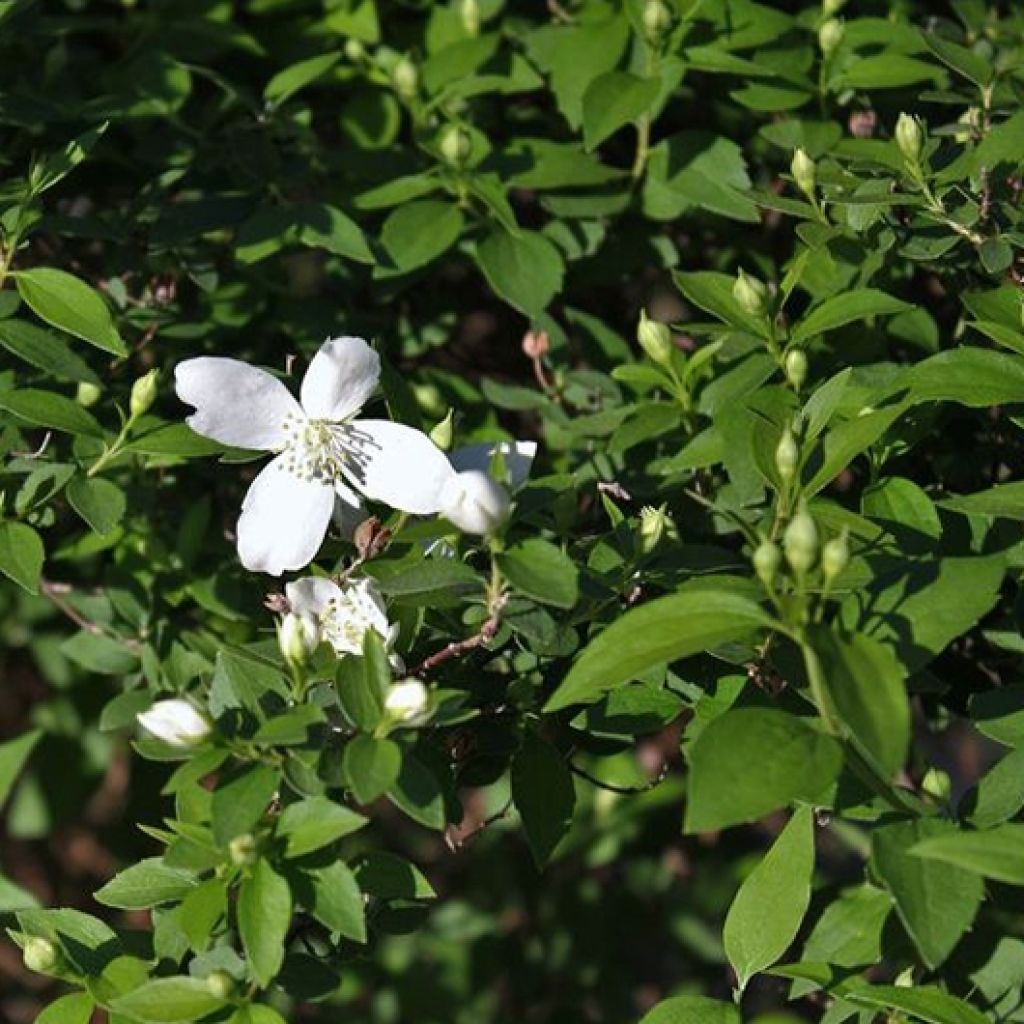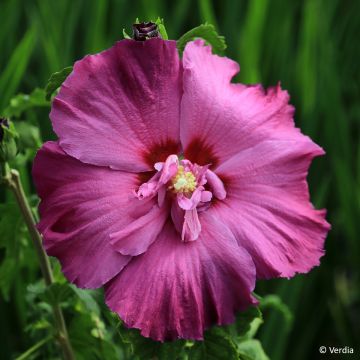

Philadelphus lemoinei Silberregen - Mock Orange


Philadelphus lemoinei Silberregen - Mock Orange


Philadelphus lemoinei Silberregen - Mock Orange
Philadelphus lemoinei Silberregen - Mock Orange
Philadelphus x lemoinei Silberregen
Mock Orange
Special offer!
Receive a €20 voucher for any order over €90 (excluding delivery costs, credit notes, and plastic-free options)!
1- Add your favorite plants to your cart.
2- Once you have reached €90, confirm your order (you can even choose the delivery date!).
3- As soon as your order is shipped, you will receive an email containing your voucher code, valid for 3 months (90 days).
Your voucher is unique and can only be used once, for any order with a minimum value of €20, excluding delivery costs.
Can be combined with other current offers, non-divisible and non-refundable.
Home or relay delivery (depending on size and destination)
Schedule delivery date,
and select date in basket
This plant carries a 24 months recovery warranty
More information
We guarantee the quality of our plants for a full growing cycle, and will replace at our expense any plant that fails to recover under normal climatic and planting conditions.
Would this plant suit my garden?
Set up your Plantfit profile →
Description
The Philadelphus 'Silberregen' is a variety of Mock Orange. It is fascinating due to its reasonably compact habit, especially its beautiful, highly fragrant white flowering in May-June. It emits a surprising scent reminiscent of strawberries, which sets this variety apart from other Lemoine hybrid Mock Oranges. This medium-sized bush is perfect for small gardens and beginners: it adapts well to most soils in sunny or semi-shaded locations and is frost-resistant. It can be planted in borders, hedges, or pots to decorate a terrace.
The genus Philadelphus belongs to the Hydrangea family, which includes several genera used for ornamental purposes, such as Hydrangeas (Hydrangea), Deutzias, or the less common Carpenterias. The 'Silberregen' variety (silver rain in German, also known as 'Silver Showers') is a Lemoine hybrid. Nurseryman Victor Lemoine initially created this group of plants from Nancy, internationally renowned for his numerous plant creations in both the bush and perennial fields. Philadelphus x lemoinei is a cross between P. coronarius, undoubtedly the most well-known species, and P. microphyllus, a dwarf species.
"Silberregen," as its name suggests, is a German creation by the breeder Krotz and dates back to 1949. When fully grown, at around 10 years old, it reaches a medium height of 1.50 m (5ft) (maximum 2 m (7ft)), with a spread of 1 m (3ft) to 1.50 m. It blooms in May-June, producing single flowers with 4 or 5 white petals measuring 3 to 4 cm (1 to 2in) in diameter. Gathered in clusters on the bush, they emit a surprising strawberry chewing gum scent! The centre of the flowers is composed of a bouquet of white-yellow stamens, which is quite decorative.
The deciduous foliage appears during spring with a fairly light, bright green colour that tends to darken afterwards. The small leaves are entire, oval-shaped with pointed tips, slightly hairy, and measure about 2 to 3 cm (1in) in length. The bush has an irregular bushy habit, well-suited for creating natural-looking hedges with a slightly wild appearance.
The Philadelphus, sometimes called poet's jasmine, are robust and perfectly hardy bushes that thrive in all types of soil. They can withstand anything, even summer droughts, but prefer some moisture at their base. 'Silberregen' is well-suited for mass planting small hedges, whether free or formal, but you can also choose to plant it as a standalone feature in a small garden. In a hedge, it will blend well with other naturally-looking plants, such as our European Spindle Tree, with its magnificent autumnal red foliage and attractive orange and pink decorative fruits, or the Amelanchier canadensis October Flame, with its white flowers and flamboyant autumn colours. You can also plant it alongside the Rosa hugonis, a little-known botanical rose with beautiful yellow flowers that give off a natural appearance.
Philadelphus lemoinei Silberregen - Mock Orange in pictures






Plant habit
Flowering
Foliage
Botanical data
Philadelphus
x lemoinei
Silberregen
Hydrangeaceae
Mock Orange
Cultivar or hybrid
Other Philadelphus - Mock Orange
View all →Planting and care
is straightforward to grow, requiring very little maintenance and accommodating; it is well suited to all gardens and ideal for beginner gardeners. Ordinary, poor, even limestone soil, not too dry or too wet, suits it. However, it will prefer fresh, well-drained and humus-rich soil. Very hardy, it can withstand temperatures as low as -20°C (1°F). Planting should be done in early spring or autumn, preferably in full sun or partial shade. Excessive heat exposure should be avoided in dry and hot climates. Flowering on the previous year's shoots, the Philadelphus should be pruned after flowering, in July-August, by shortening the flowering branches by one-third of their length. More severe pruning can be done every 2 to 3 years to keep it compact and floriferous. Do not hesitate to cut the old wood and long branches down to the base of the plant to encourage branching from the base. A resistant bush, it may, however, be prone to powdery mildew and black aphids.
Planting period
Intended location
Care
Planting & care advice
This item has not been reviewed yet - be the first to leave a review about it.
Similar products
Haven't found what you were looking for?
Hardiness is the lowest winter temperature a plant can endure without suffering serious damage or even dying. However, hardiness is affected by location (a sheltered area, such as a patio), protection (winter cover) and soil type (hardiness is improved by well-drained soil).

Photo Sharing Terms & Conditions
In order to encourage gardeners to interact and share their experiences, Promesse de fleurs offers various media enabling content to be uploaded onto its Site - in particular via the ‘Photo sharing’ module.
The User agrees to refrain from:
- Posting any content that is illegal, prejudicial, insulting, racist, inciteful to hatred, revisionist, contrary to public decency, that infringes on privacy or on the privacy rights of third parties, in particular the publicity rights of persons and goods, intellectual property rights, or the right to privacy.
- Submitting content on behalf of a third party;
- Impersonate the identity of a third party and/or publish any personal information about a third party;
In general, the User undertakes to refrain from any unethical behaviour.
All Content (in particular text, comments, files, images, photos, videos, creative works, etc.), which may be subject to property or intellectual property rights, image or other private rights, shall remain the property of the User, subject to the limited rights granted by the terms of the licence granted by Promesse de fleurs as stated below. Users are at liberty to publish or not to publish such Content on the Site, notably via the ‘Photo Sharing’ facility, and accept that this Content shall be made public and freely accessible, notably on the Internet.
Users further acknowledge, undertake to have ,and guarantee that they hold all necessary rights and permissions to publish such material on the Site, in particular with regard to the legislation in force pertaining to any privacy, property, intellectual property, image, or contractual rights, or rights of any other nature. By publishing such Content on the Site, Users acknowledge accepting full liability as publishers of the Content within the meaning of the law, and grant Promesse de fleurs, free of charge, an inclusive, worldwide licence for the said Content for the entire duration of its publication, including all reproduction, representation, up/downloading, displaying, performing, transmission, and storage rights.
Users also grant permission for their name to be linked to the Content and accept that this link may not always be made available.
By engaging in posting material, Users consent to their Content becoming automatically accessible on the Internet, in particular on other sites and/or blogs and/or web pages of the Promesse de fleurs site, including in particular social pages and the Promesse de fleurs catalogue.
Users may secure the removal of entrusted content free of charge by issuing a simple request via our contact form.
The flowering period indicated on our website applies to countries and regions located in USDA zone 8 (France, the United Kingdom, Ireland, the Netherlands, etc.)
It will vary according to where you live:
- In zones 9 to 10 (Italy, Spain, Greece, etc.), flowering will occur about 2 to 4 weeks earlier.
- In zones 6 to 7 (Germany, Poland, Slovenia, and lower mountainous regions), flowering will be delayed by 2 to 3 weeks.
- In zone 5 (Central Europe, Scandinavia), blooming will be delayed by 3 to 5 weeks.
In temperate climates, pruning of spring-flowering shrubs (forsythia, spireas, etc.) should be done just after flowering.
Pruning of summer-flowering shrubs (Indian Lilac, Perovskia, etc.) can be done in winter or spring.
In cold regions as well as with frost-sensitive plants, avoid pruning too early when severe frosts may still occur.
The planting period indicated on our website applies to countries and regions located in USDA zone 8 (France, United Kingdom, Ireland, Netherlands).
It will vary according to where you live:
- In Mediterranean zones (Marseille, Madrid, Milan, etc.), autumn and winter are the best planting periods.
- In continental zones (Strasbourg, Munich, Vienna, etc.), delay planting by 2 to 3 weeks in spring and bring it forward by 2 to 4 weeks in autumn.
- In mountainous regions (the Alps, Pyrenees, Carpathians, etc.), it is best to plant in late spring (May-June) or late summer (August-September).
The harvesting period indicated on our website applies to countries and regions in USDA zone 8 (France, England, Ireland, the Netherlands).
In colder areas (Scandinavia, Poland, Austria...) fruit and vegetable harvests are likely to be delayed by 3-4 weeks.
In warmer areas (Italy, Spain, Greece, etc.), harvesting will probably take place earlier, depending on weather conditions.
The sowing periods indicated on our website apply to countries and regions within USDA Zone 8 (France, UK, Ireland, Netherlands).
In colder areas (Scandinavia, Poland, Austria...), delay any outdoor sowing by 3-4 weeks, or sow under glass.
In warmer climes (Italy, Spain, Greece, etc.), bring outdoor sowing forward by a few weeks.



























































